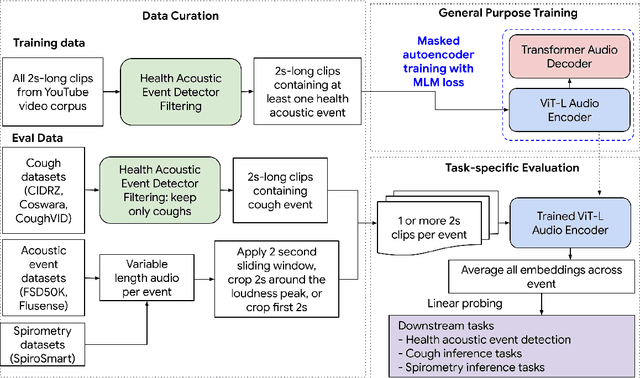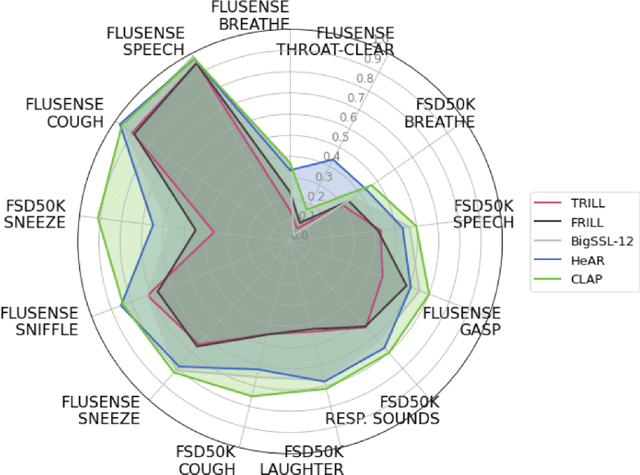Sam Fishman
HeAR -- Health Acoustic Representations
Mar 04, 2024



Abstract:Health acoustic sounds such as coughs and breaths are known to contain useful health signals with significant potential for monitoring health and disease, yet are underexplored in the medical machine learning community. The existing deep learning systems for health acoustics are often narrowly trained and evaluated on a single task, which is limited by data and may hinder generalization to other tasks. To mitigate these gaps, we develop HeAR, a scalable self-supervised learning-based deep learning system using masked autoencoders trained on a large dataset of 313 million two-second long audio clips. Through linear probes, we establish HeAR as a state-of-the-art health audio embedding model on a benchmark of 33 health acoustic tasks across 6 datasets. By introducing this work, we hope to enable and accelerate further health acoustics research.
Measuring the Reliability of Reinforcement Learning Algorithms
Dec 10, 2019



Abstract:Lack of reliability is a well-known issue for reinforcement learning (RL) algorithms. This problem has gained increasing attention in recent years, and efforts to improve it have grown substantially. To aid RL researchers and production users with the evaluation and improvement of reliability, we propose a set of metrics that quantitatively measure different aspects of reliability. In this work, we focus on variability and risk, both during training and after learning (on a fixed policy). We designed these metrics to be general-purpose, and we also designed complementary statistical tests to enable rigorous comparisons on these metrics. In this paper, we first describe the desired properties of the metrics and their design, the aspects of reliability that they measure, and their applicability to different scenarios. We then describe the statistical tests and make additional practical recommendations for reporting results. The metrics and accompanying statistical tools have been made available as an open-source library, here: https://github.com/google-research/rl-reliability-metrics . We apply our metrics to a set of common RL algorithms and environments, compare them, and analyze the results.
 Add to Chrome
Add to Chrome Add to Firefox
Add to Firefox Add to Edge
Add to Edge